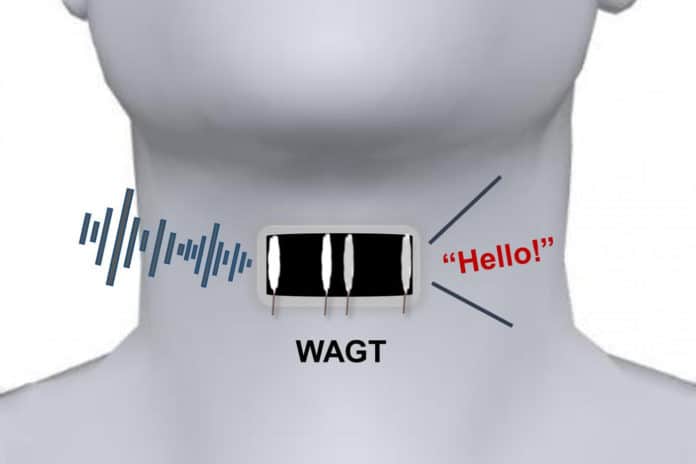Most of us often take speech for granted, but human speech is a biological marvel. It is a complex process that involves both motions of the mouth and vibrations of folded tissues, called vocal cords, within the throat. The rhythmic vibrations of the vocal cords give us the ability to speak, and if the vocal cords sustain injuries or other lesions, a person can lose the ability to speak.
Some research suggests that about 8 per 10000 people are born mute, and some become mute later in life due to injury or disease.
Now, some Chinese scientists have developed something that could make the lives of mute people, a little easier and could one day allow the mute to speak. The team from Beijing’s Tsinghua University has developed a wearable artificial throat that, when attached to the neck, can transform human throat movements into different sounds with the training of the wearer.
The invention called Wearable Artificial Graphene Throat abbreviated as “WAGT,” can be applied to the user’s throat by first wetting it with water, like a temporary tattoo. It is made by laser-scribing graphene that had been applied to a thin sheet of polyvinyl alcohol film.
It measures just 0.6 to 1.2 inches (15 by 30 mm) in size – and is connected with electrodes to a small armband that contained a circuit board, microcomputer, power amplifier, and decoder.
When the wearer noiselessly imitates the throat motions of speech, the WAGT detects those movements via the skin and decodes them, and converts them into sounds. So far, the system has been trained to identify some basic words like “OK” and “No.”
The earlier prototype of this kind that transformed skin motions into sound needed to be taped to the skin; it wasn’t comfortable enough to wear for long periods of time. Whereas, the new version is so thin and can be attached to the throat using just water.
Researchers hope that, in the future, a more advanced version might help mute people speak with relative ease. Their research is recently published in the journal ACS Nano.
